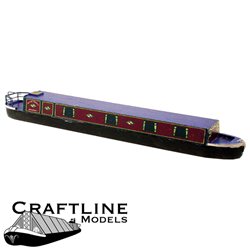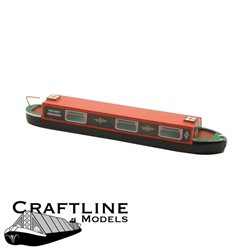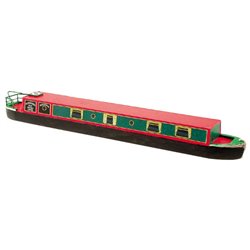Static grass puffer bottles work by manually charging model grass fibres with static electricity. When the charged...
No products
Product successfully added to your shopping cart
There are 0 items in your cart. There is 1 item in your cart.
Search Tips
Is wood better than plastic for modelling?
When it comes to scale modelling, the debate between using wood or plastic is a long-standing one. Both materials have their merits, but the choice largely depends on what you're trying to achieve in your model and your personal preferences as a modeller. Let's break down the benefits and drawbacks of wood versus plastic in the context of scale modelling, helping you decide which might be better for your project.
Wood has been a traditional material in model building for centuries, particularly for ship models and early model railways. One of the primary advantages of wood is its natural texture and authenticity, which lends itself beautifully to models where realism and fine craftsmanship are paramount. For instance, wooden ship models often feature intricate plank-on-frame construction, giving them a highly realistic appearance. If you're modelling a structure that would be made of wood in the real world, like a timber-framed building or an old railway carriage, wood offers a level of authenticity that's hard to match with plastic.
Wood also provides a degree of customisation and flexibility. It can be easily cut, sanded, and shaped to fit any design, making it ideal for bespoke projects or modifications. Wooden parts can be glued together using a variety of adhesives and can also be stained, painted, or varnished to create different finishes. For example, a modeller building a wooden trestle bridge for a railway layout can achieve a weathered look with stains and subtle sanding techniques that make it appear as though the structure has aged naturally over time.
However, wood can be challenging to work with, especially for beginners. Precision is key when using wood, and even small mistakes in cutting or shaping can be difficult to correct. It's also less forgiving than plastic in terms of durability, as wood can warp or crack if not handled properly, especially in environments with fluctuating humidity. Additionally, wood models often require more time and effort to construct, as each piece must be carefully measured and aligned.
On the other hand, plastic has become the dominant material in scale modelling for several good reasons. Plastic kits are typically pre-moulded, meaning many of the components are ready to fit together straight from the box, making them more accessible for beginners or those looking to complete projects quickly. Plastic models are often very precise, with high levels of detail moulded directly into the parts, especially in mass-produced kits. For example, modern plastic aircraft kits feature rivets, panel lines and other intricate details that would be much harder to replicate in wood.
Plastic is also extremely durable and easy to work with. Parts are lightweight yet sturdy, and mistakes can often be corrected more easily compared to wood. Plastic can be cut, glued, and painted with relative ease, and many plastic model kits come with an array of aftermarket accessories like photo-etched parts and decals to enhance the final result. For instance, plastic model railway kits offer detailed carriages and locomotives that require minimal modification, allowing modellers to focus on painting and weathering rather than complex construction.
That said, plastic does have its limitations. It can sometimes look too uniform or artificial, lacking the organic feel that wood offers. While plastic is great for replicating metal, glass and modern materials, it doesn't always convey the same realism for models that should appear more natural or aged. This is why some modellers prefer wood for projects like vintage aircraft or sailing ships, where the texture and grain of wood can be more convincing than plastic.
Ultimately, whether wood or plastic is better for scale modelling depends on the specific requirements of your project and your skills as a modeller. If you're aiming for a highly detailed, realistic model with natural textures and have the patience and tools to work with wood, it can be an excellent choice. But if you prefer a material that's easier to handle, with ready-to-assemble kits that offer precision and detail, plastic is likely the way to go. Many experienced modellers find that a combination of both materials can yield the best results, using wood for key structural components and plastic for intricate detailing. The choice, as always, is yours.
Click here to receive the tips weekly in your mailbox. You can unsubscribe at any time.










